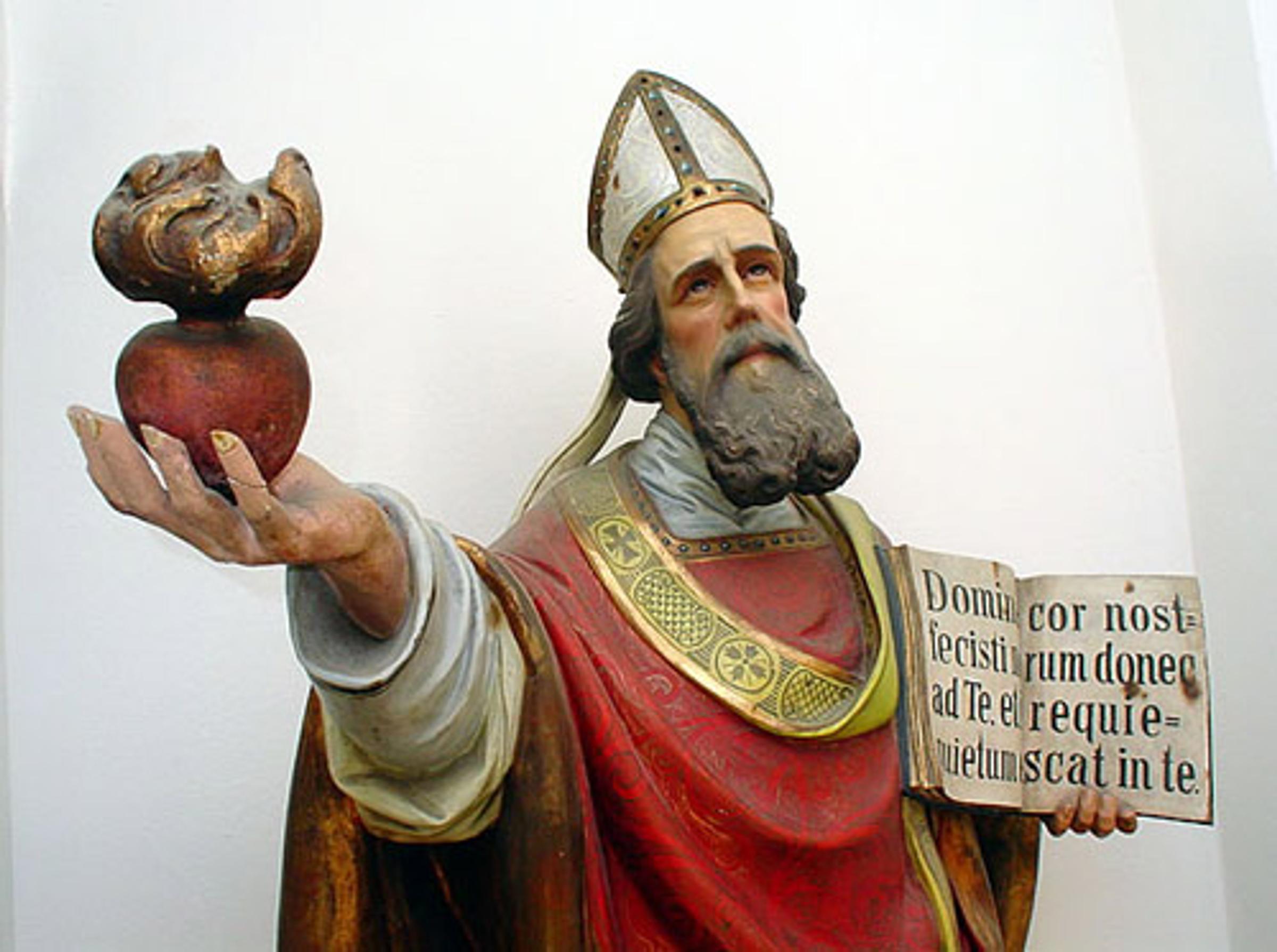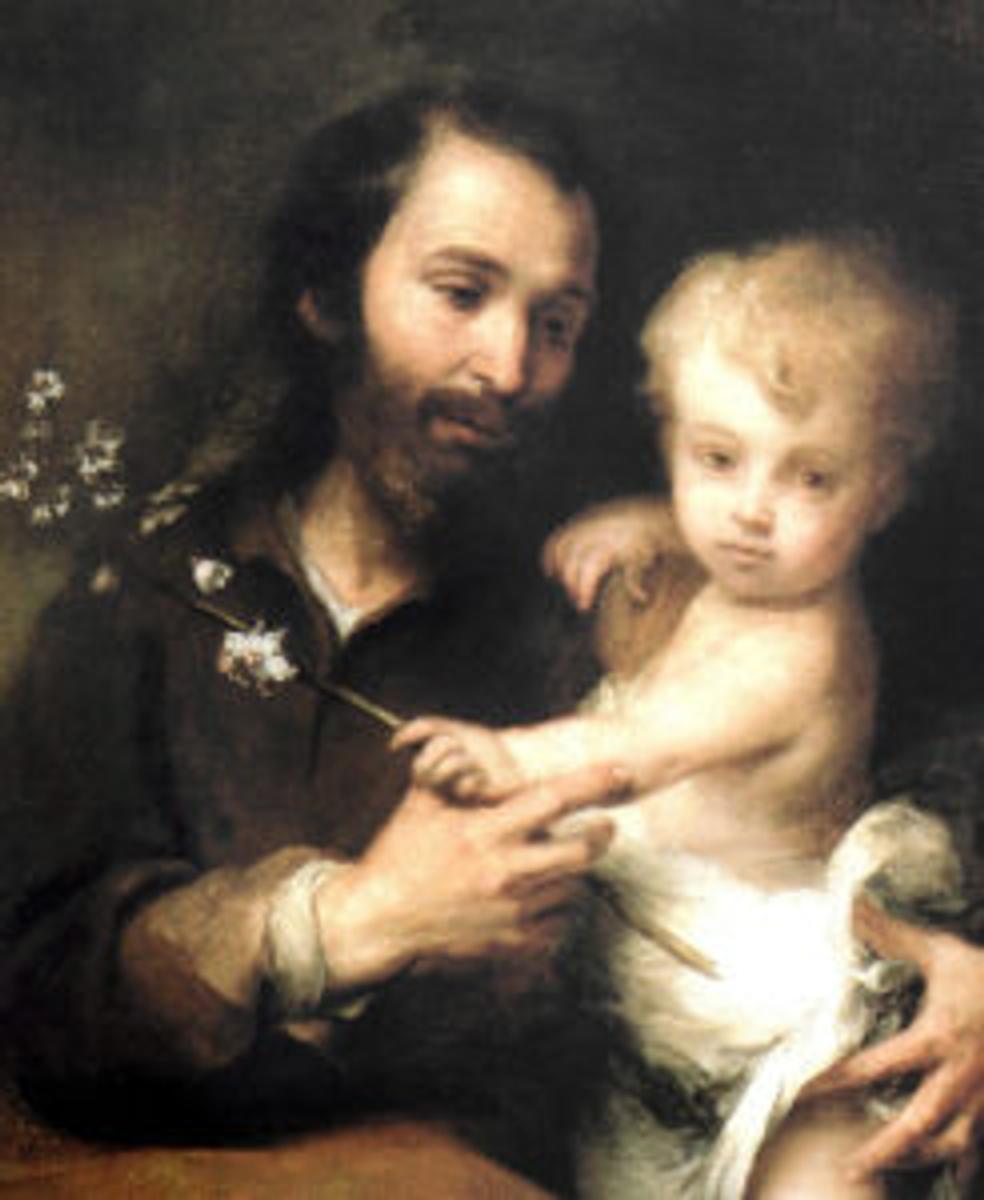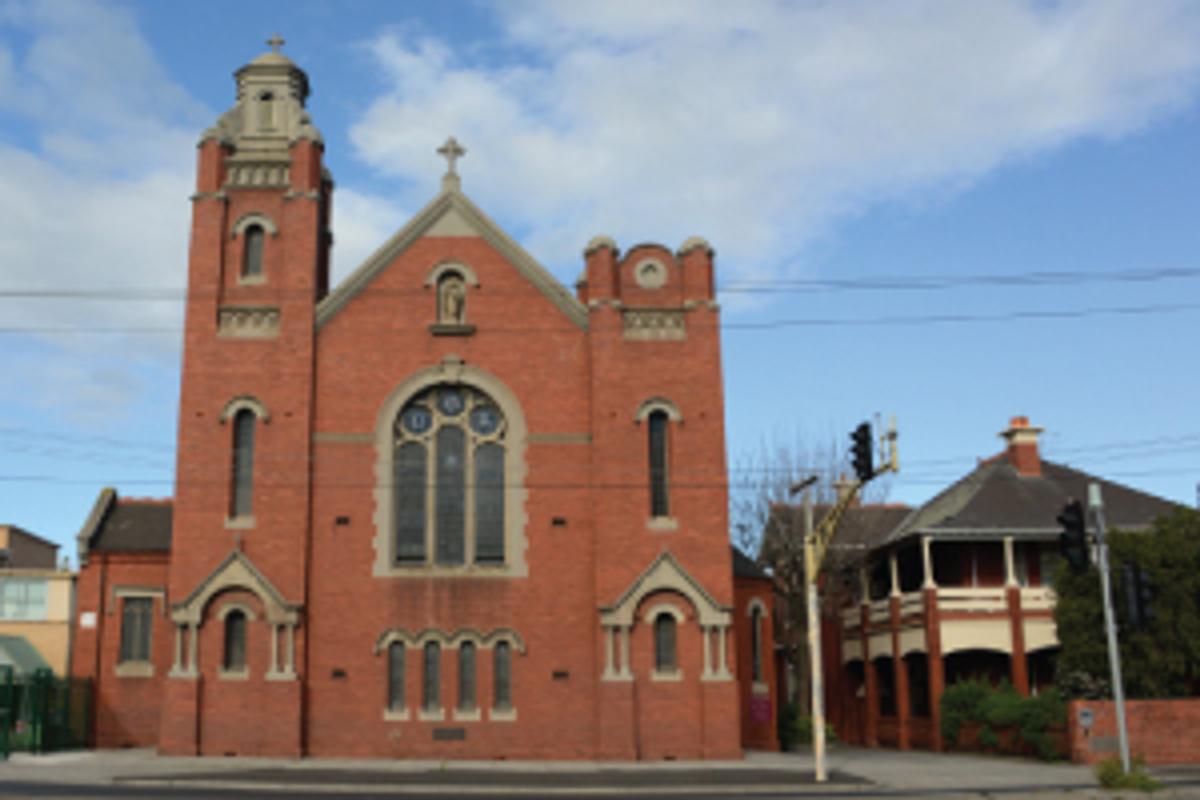Faith News
School & Parish Connections

Faith News
School & Parish Connections
Our Father in Heaven,
Look over and bless St. Augustine’s while we are working and playing.
Help us to respect and care for each other as you taught us to.
Give us the opportunity to do our best for you each day.
We look forward to being able to share our lives with our friends and families.
Keep us safe and give us the courage to be
people who want to know you more.
Amen.
I invite all families to pray this prayer at home, maybe one morning each week.
Hail Holy Queen
Hail, Holy Queen, Mother of Mercy,
our life, our sweetness and our hope.
To you do we cry, poor banished children of Eve.
To you do we send up our sighs,
mourning and weeping in this valley of tears
Turn then, most gracious advocate,
your eyes of mercy toward us,
and after this exile show unto us the blessed fruit of thy womb,Jesus.
O clement,
O loving,
O sweet Virgin Mary.
Amen.


To you,
O blessed Joseph,
do we come in our afflictions,
and having implored the help of your most holy Spouse,
we confidently invoke your patronage also.
Through that charity which bound you to the Immaculate Virgin Mother of God and through the paternal love with which you embraced the Child Jesus,
we humbly beg you graciously to regard the inheritance which Jesus Christ has purchased by his Blood,
and with your power and strength to aid us in our necessities.
O most watchful guardian of the Holy Family, defend the chosen children of Jesus Christ;
O most loving father, ward off from us every contagion of error and corrupting influence;
O our most mighty protector, be kind to us and from heaven assist us in our struggle with the power of darkness.
As once you rescued the Child Jesus from deadly peril,
so now protect God’s Holy Church from the snares of the enemy and from all adversity; shield, too, each one of us by your constant protection,
so that, supported by your example and your aid, we may be able to live piously,
to die in holiness, and to obtain eternal happiness in heaven.
Amen.


Jesus showed himself to the Eleven and said to them, ‘Go out to the whole world; proclaim the Good News to all creation. He who believes and is baptised is saved; he who does not believe will be condemned. These are the signs that will be associated with believers: in my name they will cast out devils; they will have the gift of tongues; they will pick up snakes in their hands, and be unharmed should they drink deadly poison; they will lay their hands on the sick, who will recover.’
And so the Lord Jesus, after he had spoken to them, was taken up into heaven: there at the right hand of God he took his place, while they, going out, preached everywhere, the Lord working with them and confirming the word by the signs that accompanied it.
By Amerall Blom, Learning Consultant – Religious Education, Catholic Mission, People and Culture, Melbourne Archdiocese Catholic Schools.
The most significant woman in the Catholic Tradition is Mary, the mother of Jesus. Many of our Catholic schools are named in her honour as Marian charism has been the foundation for many schools and Catholic institutions.
Catholics have honoured Mary in a special way during the month of May since the end of the 13th century, and this has been encouraged by different Popes throughout the years (Francis 2020; Paul VI 1965). Last year, Pope Francis urged Catholics to unite in prayer to Mary during the month of May for all those impacted by the COVID-19 pandemic (2020).
Around the world, the most common practices to honour Mary include: praying the Rosary, praying the litany to Mary, creating bouquets of flowers, singing Marian hymns and participating in processions.
Aside from these methods of celebration, how and why do we honour and celebrate Mary in the 21st century?
Mary as woman and mother
The role and perception of women, particularly in Western cultures, have been changing over the past few decades. Although there is still a long way to go to achieve equality, women are beginning to occupy more leadership roles (Power 2018).
Since 1975, International Women's Day has been celebrated to acknowledge the economic, political, social and cultural achievements of women from all walks of life. On the second Sunday of May, Australians celebrate Mother’s Day, recognising and paying special tribute to mothers, as well as mother figures in our society. These two occasions are celebrated globally, highlighting the struggles and achievements of women. Though some people may define women by their role as wife and mother, now women are also widely recognised for the multitude of skills and abilities they bring to society.
We can view Mary in a similar light. Although her most common title is ‘mother’, she is also much more. This title is celebrated on 1 January with the Solemnity of Mary, Mother of God. The two Marian feasts during the month of May are: the Feast of Our Lady, Help of Christians on 24 May; and the Feast of the Visitation on 31 May. These two feasts set the tone for this month and the scripture reading of the Visitation (Lk 1: 39–45, 56) is used on both days.
The Visitation highlights the many virtues of Mary, such as strength, resilience, compassion and hope. Furthermore, the Magnificat (Lk 1: 46–55) has been used by a number of women’s groups, such as the Mothers of the Plaza de Mayo in Argentina in the 1970s who gathered to protest against the unjust imprisonment of their people, and likewise women protesters in Guatemala in the 1980s (Coloe 2017). As Coloe explains, ‘Beneath the piety of the anawim lies quite a dangerous “subversive” song of protest’ (2017, pp. 37–38).
The Magnificat is full of hope, promise, justice, mercy and God’s love, proclaimed by a young maiden, all of which we are challenged to imitate in our world. In recent times, we think of women in our society who have been an example of all these virtues such as Dorceta Taylor, Dolores Huerta and Malala Yousafzai, just to name a few.
Through Mary to Jesus
Amid the season of Easter where the feasts of the Ascension of the Lord, Pentecost and the Holy Trinity are celebrated, May is still attributed to Mary. In his encyclical, Mense Maio (On Prayers during May for Preservation of Peace), Pope Paul VI explains the theological reasoning behind this: our relationship with Mary always points to Jesus. ‘Since Mary is rightly to be regarded as the way by which we are led to Christ, the person who encounters Mary cannot help but encounter Christ likewise’ (1965, n. 2).
Not many scripture references are attributed to Mary. Most of them primarily appear in Luke’s Gospel. The most significant are the Annunciation (Lk 1: 26–38), the Visitation (Lk 1: 39–45, 56), the birth of Jesus (Lk 2: 1–19; Mt 1: 18–25), the wedding feast at Cana (Jn 2: 1–11) and at the foot of the cross (Jn 19: 26). These passages give us a glimpse into the character of Mary, but are always in the context of the person of Jesus.
We notice this particular relationship during the wedding feast at Cana (Jn 2: 1–11), ‘the mother of Jesus is an active agent. She is introduced first indicating her significance, she then notices the lack of wine, initiates the miracle by speaking to her son, she implicitly makes a request, and then gives explicit directives to the servants’ (Coloe 2013).
In another example in John’s Gospel, we especially notice the titles Jesus gives his mother from the cross saying ‘Woman, behold your son’ (Jn 19: 26). He then says to the disciple at the cross, ‘Behold your mother’ (Jn 19: 27). These words establish a new relationship between the disciple and Mary. They are now mother and son, the disciple is now the brother of Jesus and, through Mary, the child of God (Coloe 2013). Pope Francis highlights the maternal aspect of this scripture passage: ‘Mary reappears precisely at the crucial moment: when a large number of friends disperse out of fear. Mothers do not abandon’ (Francis 2017).
We too are called to love God and each other more fully and more courageously, so that through our actions we point others to Christ.
Mary for the 21st century
In recent times, the rights and equality of women have been a prevalent topic in our society and media (for example, ABC 2021). Many women's organisations, such as the International Women’s Development Agency and the National Council of Women Australia, still call for justice, mercy, compassion and protection of, and for, women: qualities which can be attributed to Mary.
How can we empower students to imitate these qualities?
Exploring these qualities of Mary through Scripture, as well as significant women in our global society, may lead them to identify these qualities within themselves and within those around them.
Although a longstanding tradition, celebrating, honouring and learning about Mary, especially during the month of May, can only bring us closer to Jesus. She shows us how to be a disciple and walk in the light of Jesus. As Pope Paul VI stated: ‘For what other reason do we continually turn to Mary except to seek the Christ in her arms’ (1965, n. 2).
First Reconciliation - Wednesday 16th June at 6.30pm
First Holy Communion - Sunday 29th August at 2.00pm
Confirmation - Friday 5th November at 7.00pm (TBC)


Saturday 5.00 pm
Sunday 8.00 am at Annunciation, Brooklyn
9.30 am
10.30 am (Italian)
11.00 am at Corpus Christi, Kingsville
11.30 am (Polish)
Tuesdays 9.30 am
Thursdays 9.30 am
https://www.staugustinesparish.org.au/
Use the above link to access the parish website.